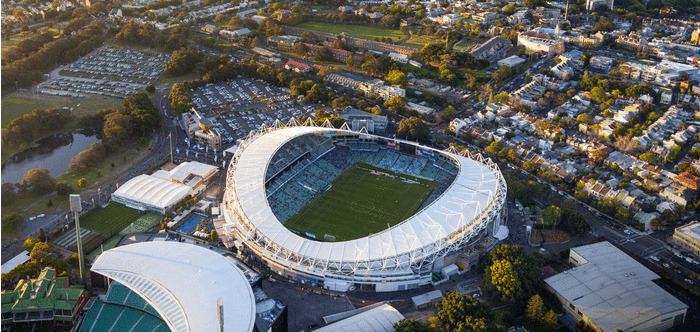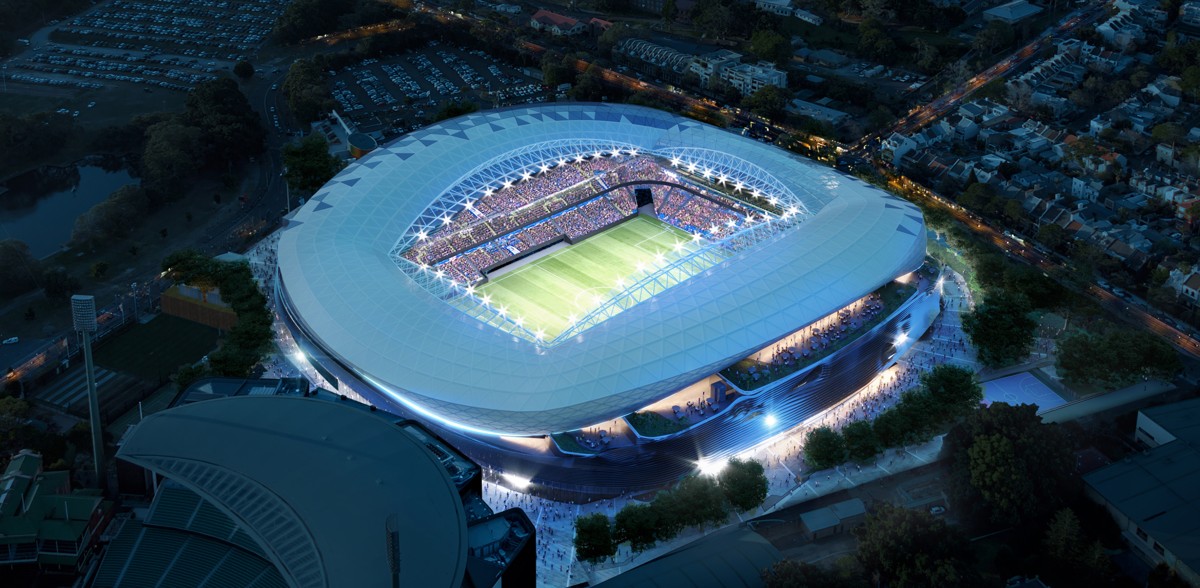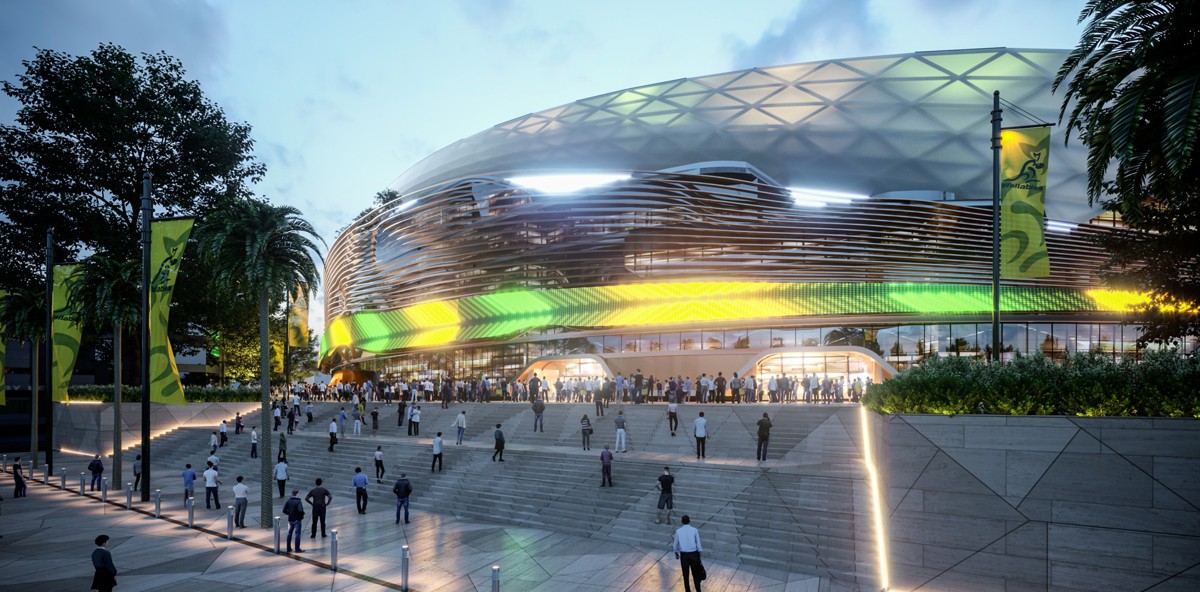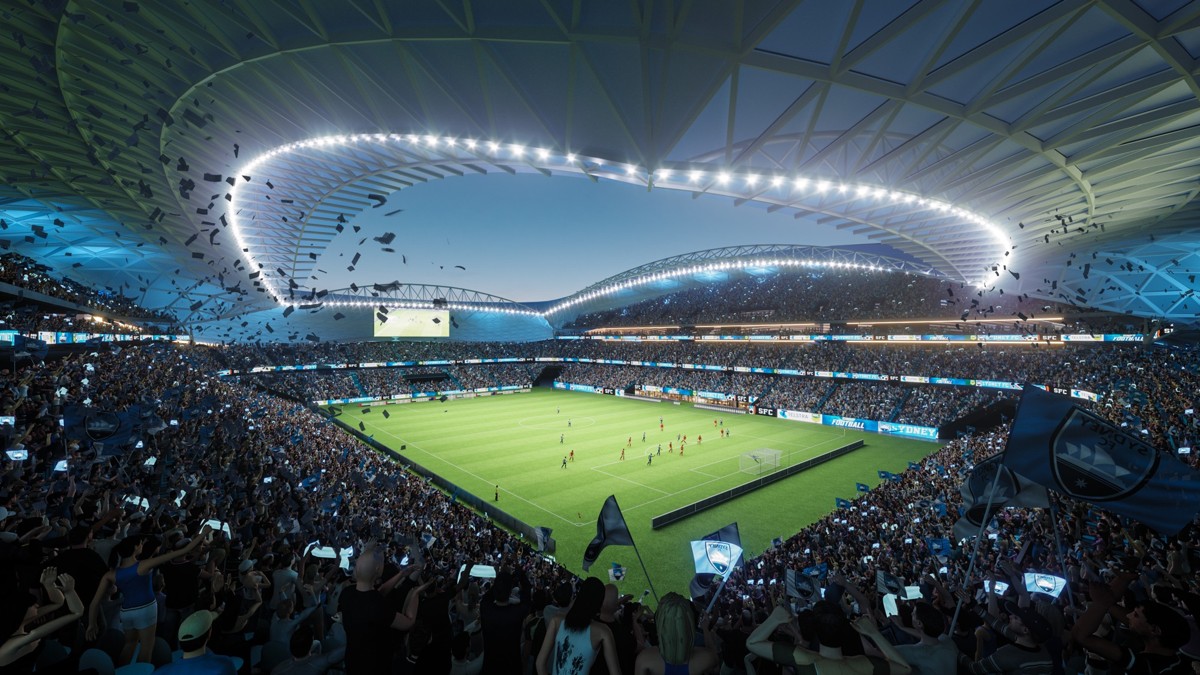New design: 45,000-seater for a 45,000-seater
source: StadiumDB.com; author: michał
 In Australia things are done differently, apparently. After just 30 years Allianz Stadium will be torn down to be replaced by a more modern stadium of the same capacity. Better, surely, but is that worth nearly $730 million?
In Australia things are done differently, apparently. After just 30 years Allianz Stadium will be torn down to be replaced by a more modern stadium of the same capacity. Better, surely, but is that worth nearly $730 million?
Advertisement
For a few years now there was talk of tearing down the old Sydney Football Stadium, better known as Allianz Stadium for commercial reasons. But before the naming rights deal is over, the stadium will no longer exist. Despite concepts of time-proving the current venue, demolition is set to begin in January already. In recent days things have been progressing fast.
On October 5, 2018 the very last event at Allianz Stadium took place. Just like during its opening game in 1988, fans were treated to quite some rain during the Michael Buble concert. The home of rugby and football teams is no longer open to the public.
Just a week later, on Oct 11, the official design of its successor was revealed. It so happened that both the old and new stadium are designed by Cox Architecture, the office established by Philip Cox and involved in majority of large and modern stadium projects across Australia.

The new 'rectangular' stadium would not exceed the capacity of old Sydney Football Stadium, staying within the margin of 45,000. However, each seat is wider, each row provides more legroom, while the entire seating bowl is steeper and divided into three tiers (along sides) instead of maximum two at the old stadium.
Along with much expanded floor space, the stadium is thus much larger than its predecessor, also providing far more toilets, more efficient catering facilities, as well as extensive hospitality.

The stadium's most distinctive feature is its roof. Created with light, parametric frame it looks almost like a white cloud by day, while at night it should change colours to mimic the pulsing atmosphere inside. The canopy will extend beyond front row which, together with its incline, should provide sufficient cover from wind and rain.
 The facades will see a division into zones. Just above the glass entrance a LED strip is planned around the stadium, topped by metallic bronze blinds. These should create a dynamic impression of fluency, while also opening the internal concourses to natural ventilation at the same. On top of it all the cloud-like roof and, in openings of the upper concourses, landscaping to make the stadium blend with its green surroundings more.
The facades will see a division into zones. Just above the glass entrance a LED strip is planned around the stadium, topped by metallic bronze blinds. These should create a dynamic impression of fluency, while also opening the internal concourses to natural ventilation at the same. On top of it all the cloud-like roof and, in openings of the upper concourses, landscaping to make the stadium blend with its green surroundings more.

It's impossible to argue that the winning design would be worse than the old stadium. Surely, it's better. But how much better is a question asked by many taxpayers in New South Wales, who will eventually foot the bill. And quite a bill indeed, expected to reach AU$ 729 million (US$ 518 million).

That's how much money will be spent on the stadium alone when it's ready in 2022. Meanwhile, further investment is needed in public transport network as only the future extension of light rail will serve the new venue directly.
Two not selected design entries haven't been released to the public. Also, contrary to public interest, no information as to potential accommodation of safe standing or curtains reducing capacity (included in preliminary concept for the site) has been released.
Advertisement
 StadiumDB
StadiumDB